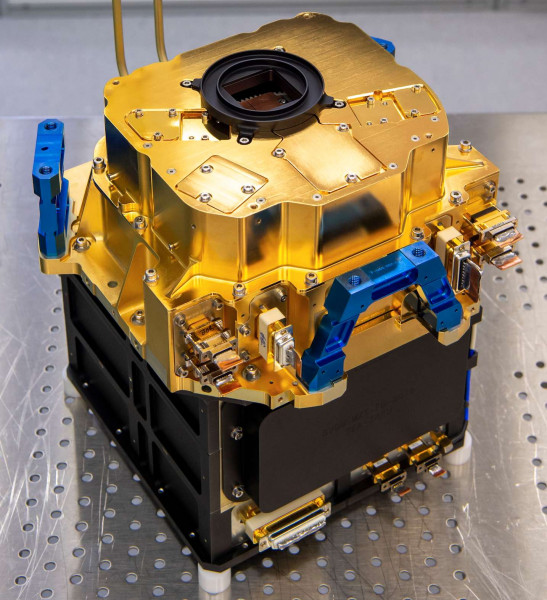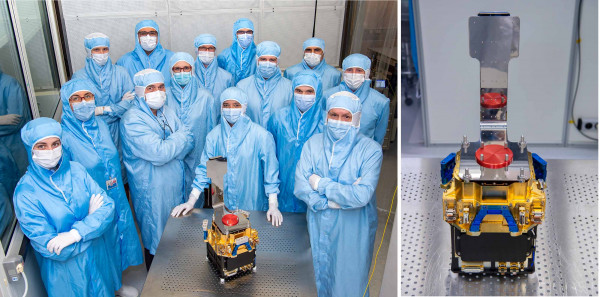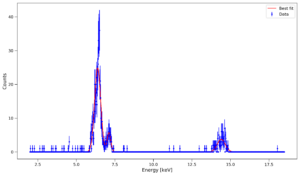The X-ray camera, intended to be placed at the focus of the MXT (Microchannel X-ray Telescope), has just been assembled and delivered to CNES by CEA teams in May 2021.
This high-tech prototype is particularly compact and innovative. It incorporates in a very limited volume, a detector with its electronic control system, an active thermal control and a filter wheel. The detector consists of a monolithic block divided into 256 × 256 pixels. It is integrated on a ceramic plate, surrounded by a shielding to reduce the impact of cosmic radiation on the detector. It is also equipped with a system of three thermoelectric coolers which keeps the temperature of the detector plane between -75 and -60 ° C. The detector assembly is inserted into a housing, which also contains a filter wheel, used for calibration and protection.

The video below illustrates the different stages of camera assembly.
The camera project, which started in 2013, was carried out in collaboration with the French Space Agency (CNES). The pnCCD type detector and its proximity electronics (CAMEX) were provided by the Max Planck Institut für Extraterrestische Physik (MPE). To carry out in-depth testing, three different models of the camera have been built over the years: a structural and thermal model (STM), a performance model (PM) which allowed to validate the complete detection chain and a shock (SM) to test its resistance, before producing the final model called “Proto flight model (PFM)”. All these models and their sub-systems were designed and integrated at the CEA and manufactured by the CEA or its subcontractors. Their development involved a team of more than 20 people. The latest PFM model was produced despite the pandemic COVID-19 crisis, thanks to the strong motivation of the technicians, engineers and scientists involved in the project.

The next steps in 2021 will be the assembly and testing of the entire MXT telescope and its final calibration which will be performed at the MPE X-ray Panter facility in Munich. The CEA MXT team will support CNES during all these tests. At the end of this test campaign in November 2021, the MXT telescope will be shipped to China for final integration on the SVOM satellite, scheduled for launch before the end of 2023.



